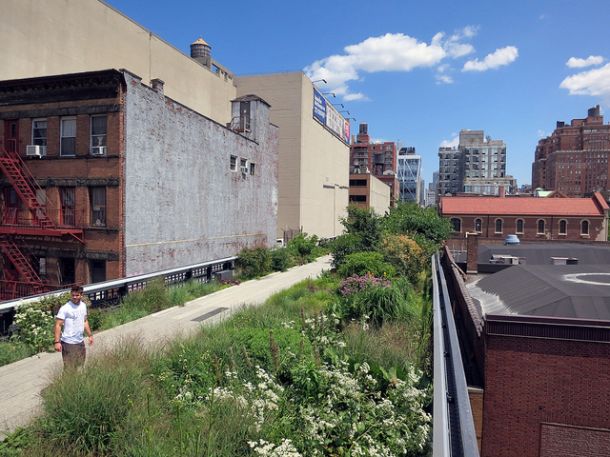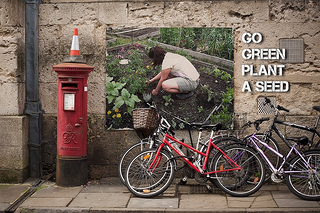
The average New Yorker today is much more aware of the importance of caring for the environment than his or her grandparents, but even with ever increasing awareness, we must ask ourselves, how green is NYC in practicality and where does it stand amongst its global counterparts?The push for cities to become sustainable goes back to the 70s when several European countries started actively bringing green ideas and environmental awareness to the attention of governments by the formation of Green parties. Since then there have been many global initiatives to move countries and cities toward reducing carbon emissions, using sustainable energy, and taking more responsibility for the global environment.The US has been noticeably slow to adopt many popular green measures when compared with other developed countries, but it is working to catch up. In recent years, New York City joined the ranks of those looking to improve the impact that their cities have on the global environment. Cities such as London and Tokyo are seriously stepping up their sustainability initiatives, and New York City isn’t getting left behind.
C40 Cities
C40 Cities is a group of large cities around the world which have pledged to take strong stances on climate change by reducing carbon emissions and increasing their energy efficiency. The cities in the network share their successes and knowledge with one another to aid in addressing global climate change. New York is not only a member of C40 Cities, but Mayor Michael Bloomberg is the current chair of the global organization.A comparison of several C40 Cities’ goals shows where NYC stands among its counterparts with similar populations – yearly emissions are still quite high when divided by the population.
| Tokyo | Moscow | NYC | London | |
| Population | 13.35 million people | 11.5 million people | 8.4 million people | 8.3 million people |
| Emissions Per Year | 61.64 million tons / year | 44.6 million tons / year | 53.36 million tons / year | 44.3 million tons / year |
| Carbon Emissions Reduction Target | 25% reduction by 2020 (from 2000 levels) | 20.7% reduction by 2020 (from 2009 levels) | 30% reduction by 2017 (from 2006 levels) | 60% reductionby 2025 (from 1990 levels) |
So, what are these major cities doing to meet their targets?
Each city is taking a different route toward reducing carbon emissions and creating a more sustainable city, but there are some notable examples in the Tokyo Green Building Program, and London’s Renewable Heat Incentive. Tokyo’s Green Building Program that currently reduces energy consumption in the capital by 20 percent. Begun in 2002, the program has four goals: mitigate the “heat island phenomenon” which cities regularly experience; streamline energy usage; use resources appropriately; and protect the environment. All new or newly expanded buildings exceeding 5,000 square meters must submit their building plans to the scrutiny of the public and the Tokyo Metropolitan Government. Unusually, while the submission of building plans is required, the adoption and usage of environmentally friendly building materials, plans, and techniques is entirely voluntary – yet the program has met with much success.This isn’t the first time Tokyo has led the way in green initiatives, the city has a history of forward-thinking progressiveness when it comes to the environment, in the 60s and 70s, the city was one of the first to take notice of the impact of urban growth and pollution.London’s Renewable Heat Incentive (RHI) aims to reduce the city’s carbon footprint by providing subsidies to private businesses for installing renewable energy technologies to heat their buildings. The program will soon expand to private homeowners as well. In addition to providing this incentive for existing buildings to install alternative energy solutions, starting in 2016 all proposals for new major residential development will be required to use energy in such a way that they have zero carbon emissions.Already London is doing better at carbon reduction than the rest of the country, according to the Greater London Authority, “Per capita, Londoners have a smaller carbon footprint than the UK average because of the high usage of public transport and the density of development.” According to UK newspaper The Guardian, this is not unusual for cities, and the average carbon footprint of city dwellers is less than their urban counterparts, due mostly to closer housing and use of public transportation. Add to that London’s congestion charge (implemented in 2003), which is a fee that motor vehicles are required to pay if they enter city limits within certain peak hours, and the city is well on its way toward continuing to reduce carbon emissions.
Tokyo’s Green Building Program that currently reduces energy consumption in the capital by 20 percent. Begun in 2002, the program has four goals: mitigate the “heat island phenomenon” which cities regularly experience; streamline energy usage; use resources appropriately; and protect the environment. All new or newly expanded buildings exceeding 5,000 square meters must submit their building plans to the scrutiny of the public and the Tokyo Metropolitan Government. Unusually, while the submission of building plans is required, the adoption and usage of environmentally friendly building materials, plans, and techniques is entirely voluntary – yet the program has met with much success.This isn’t the first time Tokyo has led the way in green initiatives, the city has a history of forward-thinking progressiveness when it comes to the environment, in the 60s and 70s, the city was one of the first to take notice of the impact of urban growth and pollution.London’s Renewable Heat Incentive (RHI) aims to reduce the city’s carbon footprint by providing subsidies to private businesses for installing renewable energy technologies to heat their buildings. The program will soon expand to private homeowners as well. In addition to providing this incentive for existing buildings to install alternative energy solutions, starting in 2016 all proposals for new major residential development will be required to use energy in such a way that they have zero carbon emissions.Already London is doing better at carbon reduction than the rest of the country, according to the Greater London Authority, “Per capita, Londoners have a smaller carbon footprint than the UK average because of the high usage of public transport and the density of development.” According to UK newspaper The Guardian, this is not unusual for cities, and the average carbon footprint of city dwellers is less than their urban counterparts, due mostly to closer housing and use of public transportation. Add to that London’s congestion charge (implemented in 2003), which is a fee that motor vehicles are required to pay if they enter city limits within certain peak hours, and the city is well on its way toward continuing to reduce carbon emissions.
Additionally London is aiming to increase its green spaces by 20-25% by 2015 – according to Mayor Johnson, this is an addition of approximately two million trees to the city. According to the London government’s website, “over 65 per cent of London is green, and we have four times more green space per Londoner than the average New Yorker enjoys.” However, New York City is closing this gap, with its Million Trees NYC initiative which aims to plant a million more trees in the city in the ten years between 2007 and 2017 – a goal which, as of the writing of this article, is already past the 750,000 mark.
New York City – PlaNYC in Action
So what is New York’s plan? In 2007, Mayor Bloomberg’s office announced PlaNYC, an environmental initiative which aims to “enhance the quality of life for all New Yorkers” by growing a stronger economy and tackling climate change. Luckily for both the environment and New Yorkers alike, in the four years since PlaNYC was announced, various attributes have been implemented in NYC even though most of its goals have much longer term end-dates.In April 2014, Mayor de Blasio released the 2014 PlaNYC progress report and announced that the City is on track to meet all of its ambitious sustainability targets. Regarding energy efficiency, the city has already reached the following goals:
- Expanded the Mayor’s Carbon Challenge from universities and hospitals to commercial tenants, encouraging participants to reduce GHG emissions 30 percent in just 10 years
- Retrofitted more than 2,700 streetlights with LED technology
- Supported development of over 1,000 megawatts of new, highly efficient in-city generation
- Supported development of the Spectra and Williams Rockaways Pipelines to provide New York City with its first new direct interstate gas pipeline in decades
- Benchmarked nearly 2 billion square feet of real estate—more than the entire built area of San Francisco and Boston combined–as part of the Greener, Greater Buildings Plan
In addition the city’s other measures, such as the addition of more bike lanes and the expansion of the city’s parks and green spaces help to make the city not only more sustainable, but greener overall. So, while NYC might not have a reputation as a green or sustainable city – it is swiftly moving toward that; and with the help of C40 Cities, city government initiatives, and the cooperation of its citizens, it will reach that goal and beyond.

